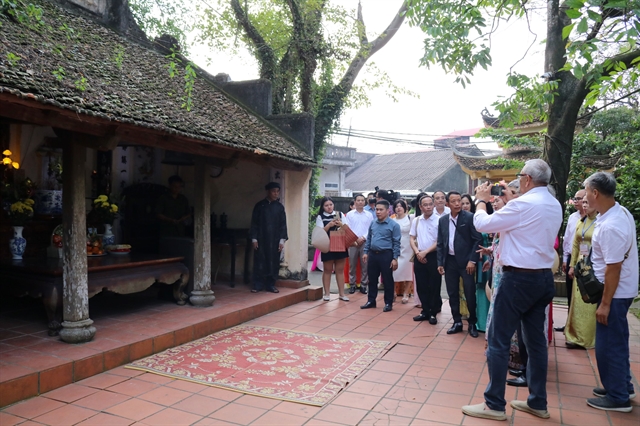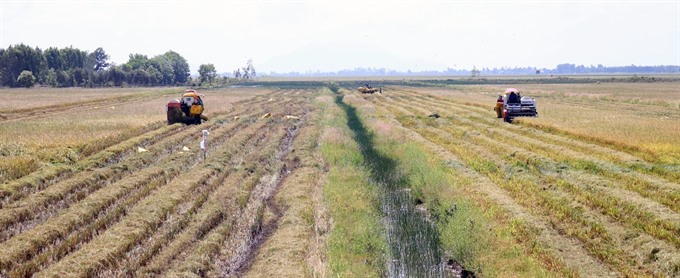 Society
Society

Kiên Giang Province, the country’s largest rice producer, has grown more than 4.34 million tonnes of paddy so far this year, 900,000 tonnes more than the full-year target.
 |
| Farmers harvest the 2018 summer- autumn rice in Kiên Giang Province’s Giang Thành District. — VNA/VNS Photo |
KIÊN GIANG — Kiên Giang Province, the country’s largest rice producer, has grown more than 4.34 million tonnes of paddy so far this year, 900,000 tonnes more than the full-year target.
The Mekong Delta province grew the grain on a combined 728,400ha this year, with high-quality rice varieties accounting for 80 per cent, according to its Department of Agriculture and Rural Development. Thus, if a hectare of land yielded two crops, the department counted it as two hectares of production.
The 2017-18 winter-spring rice crop had the highest yield of seven tonnes per hectare compared to 5.3 tonnes for the summer-autumn crop, five tonnes for the autumn-winter crop, and 4.5ha for the mùa crop.
The mùa crop is planted in the rainy season and the varieties grown have a maturity period of up to six months compared to three months for others.
Đỗ Minh Nhựt, deputy director of the department, said rice production faced difficulties this year due to unfavourable weather and saltwater intrusion.
Saltwater affected the 2017-18 winter-spring rice in Kiên Lương and Giang Thành districts when the crop was flowering.
The summer-autumn and autumn-winter crops in Tân Hiệp and Hòn Đất districts were flattened by prolonged rains when they were ready for harvest.
The delta’s annual flooding season was intense this year, damaging hundreds of hectares of rice in Giang Thành, Kiên Lương, Hòn Đất and Tân Hiệp districts.
Pests like brown plant hoppers and rice stem gall midge also affected the quantity and quality of rice this year.
Yet the province easily managed to achieve the rice production target as the department encouraged farmers to adopt certain models like planting rice and breeding shrimp together in coastal areas and invest in agricultural machinery and irrigation, Nhựt said.
It also recommended the “3 reductions and 3 increases” and “1 must and 5 reductions” models.
The former refers to reducing seeding, fertilisers and plant protection chemicals to achieve increases in productivity, quality and efficiency.
The latter requires farmers to use certified seeds and reduce seeding, plant protection chemicals, nitrogen fertilisers, irrigation and post-harvest losses.
In the 2018-19 winter-spring rice crop, the province plans to crop 285,000ha and harvest more than two million tonnes of the grain.
Nhựt said sowing would be completed by early next January.
The department is instructing farmers to use short-term, high-quality varieties and use the “3 reductions and 3 increases” and “1 must and 5 reductions” models, he said.
It would focus on further developing large-scale fields to produce high-quality rice for exports, he said. — VNS




